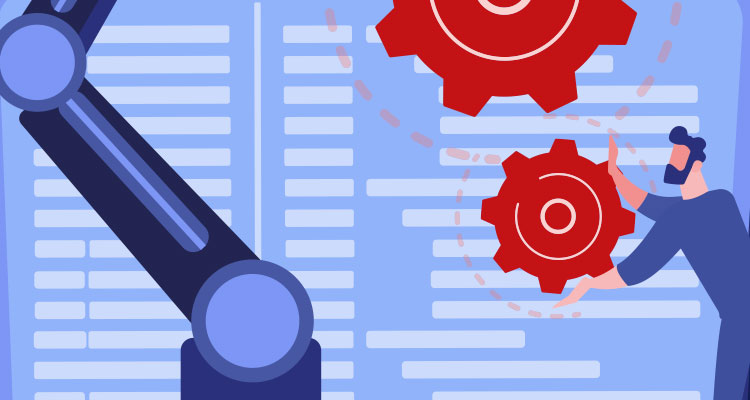
Digitize work, reduce risk, and maximize profits.
Construction is an industry built on massive scale, precise execution, and collaboration of a global team of suppliers. Despite all the advancements, poor communication and lack of collaboration across teams, leading to inefficiencies, chaos, and increased risk, remains our industry’s Achilles heel. Less than ten percent of large construction projects finish on time and on budget. For an industry valued over $13 trillion, this isn’t just a challenge – it’s a wake-up call. How can we keep up with the changing times and meet reasonable customer expectations in today’s connected world?
Let me share something from my experience. I’ve seen firsthand how technology, especially AI, transforms the challenges of lack of digitized work, increased risk, and low-profit margins into opportunities for the construction industry. It’s not just about cutting costs or saving time – it’s about reimagining how we engineer, procure, build, and deliver our product to our customers.
The reality check: Why construction needs AI
Every year, construction faces escalating challenges, increasing risks, and ever-thinning margins. Big dollar numbers masquerade the industry’s foundational issues. Most firms are one error away from going out of business. Persistent labor shortages make it increasingly challenging to find skilled workers. The construction industry is facing a significant talent shortage; Deloitte reported an average of 382,000 job openings per month between August 2023 and July 2024. This marks the third consecutive year with monthly averages nearing 400,000, adding more strain to an already challenged industry. If productivity remains stagnant and workforce growth continues to be slow or negative, construction output could fall short of demand by a cumulative $40 trillion by 2040. Add to this the high-stress environment, the remote nature of work, and time away from family – all of this makes construction workers more likely than other industries to be prone to mental health challenges and high rates of suicide. This makes recruiting and retaining talent in the construction industry notoriously hard.
Traditional methods to improve project management and reduce project risk, which rely on reactive strategies and disjointed data, fall short of addressing the

complexities of today’s construction landscape. Every minor issue creates a delay and has the potential to cascade into significant issues that can eventually escalate project costs, reduce profit margins, increase safety risks, and take a toll on human capital. Given that the project end dates are often set in stone and/or any changes to the in-service date can impose heavy penalties on the contractors, most contractors work within a well-defined and constrained project execution time. Sticking to outdated practices that fail often is no longer viable. The industry requires innovative tools that can provide proactive, comprehensive insights that can help with execution strategies and provide practical help to teams operating under high duress, thin profit margins, and tight deadlines.
Predictive analytics: Preventing problems and mitigating risk
AI’s ability to analyze data from weather patterns, delivery schedules, and supply chain operations is completely transforming how our industry works. Engineering drawings do not always take constructability into account. AI and 3-D platforms can help identify constructability issues well before a project goes out for construction in the field. Businesses that use reliable data and constructability studies have experienced fewer project delays due to optimized engineering design based on constructability feedback loops between engineering and construction teams. Consider the implications of this – delays waste time, strain financial resources, diminish credibility, and increase risks. By identifying possible disruptions in advance, predictive analytics empowers engineers, construction crews, and project managers to take proactive measures instead of merely responding to challenges as they arise.
Data silos: The industry’s blind spot
One of the biggest challenges in the construction industry is the lack of effective utilization of the massive troves of data the industry generates. Centralized data platforms now address this issue by making critical information – spanning supply chain inputs, insights from on-site sensors, and historical project data – easily accessible and actionable, transforming how engineering and construction teams operate and make decisions.
Picture a scenario where potential constructability issues, cost overruns, or scheduling issues are identified months in advance. With AI-driven tools, companies can analyze everything from past performance to live project metrics, making this a reality. For instance, predictive analytics helps teams anticipate risks like engineering issues, subcontractor delays, materials shortages, or even the historical performance of specific crews and what issues to anticipate from those crews. This allows decision-makers to take preemptive measures that safeguard their financial and project execution interests. A Deloitte survey shows that construction leaders with strong data management capabilities are seven times more likely to adopt artificial intelligence and machine learning technologies. This data-driven approach equips companies with the foresight needed to sidestep costly errors and stay ahead of the competition in a challenging market. Research by Accenture stated that integrating AI could increase profit growth by a remarkable 71 percent over the next decade. AI can turn chaos into clarity and inefficiencies into opportunities by turning heaps of data into meaningful collaborative decision-making tools for engineering, construction, and project management teams to rely on.
Change: Overcoming the resistance to change
Change is hard and nowhere is that more true than in construction. When we first introduced AI tools, there was skepticism. Teams feared being replaced or burdened with unnecessary complexity.
The turning point came when our firm’s people saw the results first-hand: increased collaboration, reduced project risk, a productivity boost, better safety records, and reduced stress levels for the project teams. All this leads to better employee retention, easier recruitment of top talent to the company, and improved profit margins. Once AI proved its worth, resistance turned into demand. Today, workers in our company actively push for more AI capabilities because they’ve seen how it makes their jobs easier, safer, and more effective.
All grassroots-driven and bought-in changes are more likely to last than those pushed from the top down. The lesson is clear: AI adoption isn’t just a technology challenge – it’s a people challenge. And solving it requires clear communication, ongoing training, and a commitment to showing results early and often.
A playbook for construction
For leaders looking to integrate AI into their operations, here’s a simple roadmap:
- Start small: Choose a single, high-impact project to pilot AI tools
- Set metrics: Define clear success criteria – cost savings, safety improvements, and/or better employee retention/recruitment
- Get buy-in with your teams: Work with champions who can influence others in your company. Try to win over blockers by addressing their concerns. Invest in training to ensure buy-in within your teams and enthusiastic adoption
- Scale what works: Use data from your pilot projects to justify broader rollouts
The ROI conversation: Making AI accessible
Every leader has heard the same question in the boardroom: “What’s the return on investment?” We shouldn’t just talk about AI’s potential – we measure its impact. Our framework for AI adoption revolves around three simple questions:
- Does it reduce project risk?
- Does it improve margins?
- Does it help our people execute better with lower work stress?
If the answer to all three is yes, we move forward. If not, we don’t. It’s that simple.
The bottom line
In 2025, technology will continue driving the transformation of the construction industry. AI, BIM, digital twins, robotics, and automation are being adopted more widely, helping engineering and construction teams work smarter. These innovations can simplify project management, improve collaboration between engineering and construction teams, and support better-informed decision-making.
We’re not content with following trends – we’re shaping them. The future of construction is unfolding right now. It’s not just about keeping pace; it’s about defining what’s next, setting the standard, and building a vision for the next era of construction. Where are you on this journey?
For a list of the sources used in this article, please contact the editor.
By Hari Vasudevan
Hari Vasudevan is the Founder & CEO of both Think Power Solutions, a leading provider of tech-enabled utility infrastructure management solutions, and KYRO, an AI-driven software company designed to accelerate the growth of construction companies by offering innovative technology and capital solutions.